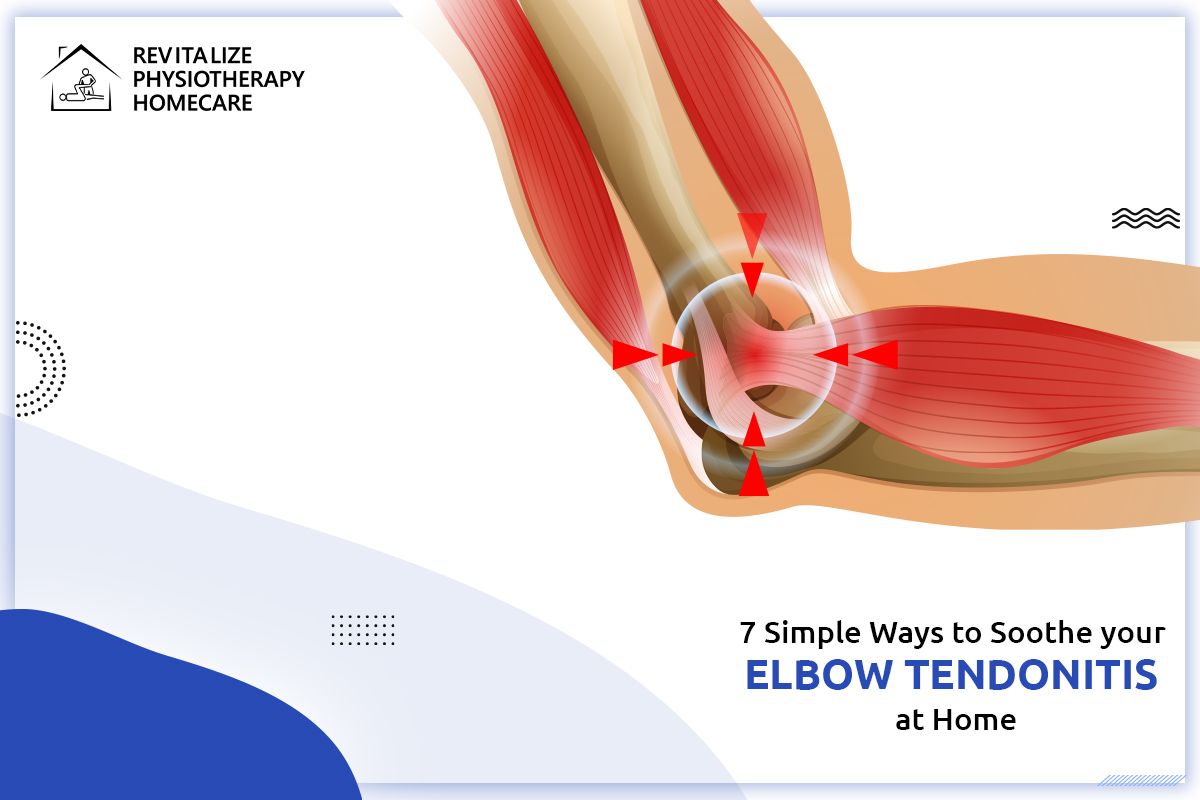7 Simple Ways to Soothe your Elbow Tendonitis at Home
Elbow pain is one of the basic injuries that affects your ability to extend arms or grip, lift, and take on a load with that particular arm. The elbow can get damaged by injuries or repetitive strain, as well as poor postures. If you're experiencing elbow pain, then it is essential to evaluate with a professional Brampton Physiotherapist.
This is crucial when you're experiencing discomfort that isn't getting better by itself over a two-to three-week period. Then such conditions seldom are referred to as lateral epicondylitis. It is a typical chronic strain injury.
Seldom, elbow pain is caused by irritation of the ligaments that keep your bone and muscle to the outer side of your elbow. If you manage your elbow pain yourself, then you may be able to stay away from needing medical treatment that could include acupuncture.
In this blog, we will help you understand 7 easy ways that will soothe your elbow pain and lessen the inflammation.
7 Easy Ways to Treat your Elbow Tendonitis at home:
1) Rest your elbow
It could appear like a one of the most common treatments but it's only effective in the event of excessive irritation or inflammation within the elbow region. Relieving your arm and not exposing it to movements which can aid inflammation and pain. It is still possible to continue your normal activities, so it is important to avoid actions and movements that may cause further irritation to the muscles. You can resume your daily activities slowly and stop if you begin feeling that familiar discomfort.
2) Ice your elbow
Ice packs applied to your elbow can alleviate pain and inflammation. Avoid applying ice directly to the skin since this could cause damage to it. Wrap the ice in a towel or a napkin. Apply the ice around the affected place for around 15-20 minutes at least 3 or 4 times throughout the day. Many people also use frozen peas bags which they keep in the freezer to use for this reason. They are able to hold cold well, and the bag is molded to the shape you require.
3) Make sure you support and compress your elbow
The RICE method is usually the best recommendation for elbow injuries:
R stands for rest, I stands for ice, C stands for compression, and E stands for elevating.
Compression is a great way to reduce muscle tiredness. Put a bandage of compression around your elbow and tighten it enough that you sense the pressure. After you have applied the bandage you should be in a position to move your fingers with ease. If you find you have a lower arm that is colder than the arm itself or the skin, you should remove the bandage right away.
4) Gentle exercise and stretching
As the above points explained, the E in RICE is basically used to raise the body and keep it in an elevated position. Straighten your arms and place your hand in a halt motion. Slowly move your arms back toward your body for approximately 15 minutes. Release and do it again. The other stretch is keeping your arms straight, then drop your hand to the point that it's under your wrist, with your palm facing towards your body. Press gently on your hands and push it toward you. Relax and repeat.
It is also possible to strengthen your forearm by lifting weights, but you must consult a physiotherapist to make sure you do the exercises in a correct manner.
5) Over-the-counter pain relievers
If you are able to take over-the-counter (OTC) pain alleviators such as Ibuprofen and naproxen, then these medications will help ease discomfort by reducing inflammation. Follow the instructions in order to avoid adverse negative effects, such as nausea. If pain continues to persist after some days of using these drugs, speak to your doctor regarding prescription strength formulas of OTC pain relief.
6) Brace your elbow
Braces that shield your elbow and provide support can also help in the reduction of the elbow discomfort. Although braces can be found in a variety of shops, it's best to consult the best Physiotherapy Clinic Brampton to make sure you purchase the correct type of brace. You could also utilize products like KT tape (kinesiology tape). These tapes aid in strengthening muscles and tendons, yet don't restrict movement as braces can. Elbow straps can also offer support and compression which makes them a great alternative.
7) Physiotherapy
A physiotherapist is able to conduct a thorough assessment of the elbow, and can identify the contributing factors as well for comorbidities with respect to the patient's symptoms. Therapists tailor their treatments to address particular injuries and assist with the goals of a person's lifestyle.
They have an understanding of the intricate 3-joint elbow and the associated anatomy. The rehabilitation and treatments that include exercises are secure and will benefit the patient for the long-term.
Conclusion
We hope this blog helps you elevate the quality of your life.
And even after taking proper precautions you're still experiencing severe discomfort or pain in your elbow, it's possible you are suffering from tennis elbow.
At Revitalize Physiotherapy and Homecare, we have a team of top specialists who cater the best Elbow Pain Treatment Brampton. They will evaluate your situation and assist you in coming up with a treatment strategy.
If the elbow pain persists, seeking treatment and assessment from us is highly advised.
Book an appointment with us now!




